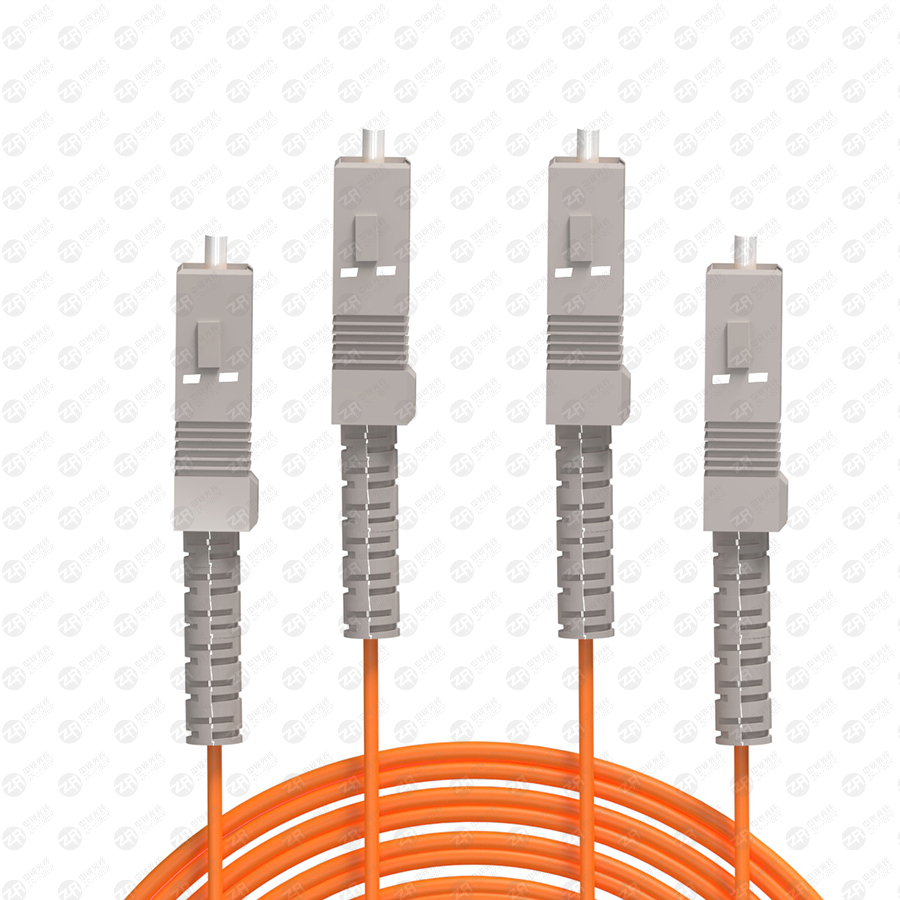Several common fiber connectors (ST, SC, LC, FC):
FC type optical fiber connector: The external strengthening method is a metal sleeve, and the fastening method is a turnbuckle. Generally used on the ODF side (the most used on the patch panel)
SC-type optical fiber connector: a connector for connecting GBIC optical modules or common optical fiber transceivers, its outer casing is rectangular, and the fastening method is a plug-in bolt type, which does not need to be rotated. (Most used on router switches)
ST-type optical fiber connector: commonly used in optical fiber distribution frame, the outer shell is round, and the fastening method is turnbuckle. (For 10Base-F connections, the connectors are usually ST type. Often used in fiber optic distribution frames)
LC type fiber optic connector: A connector for connecting SFP modules, which is made with an easy-to-operate modular jack (RJ) latch mechanism. (commonly used by routers)
Fiber Connector Type
method/step
The common optical fiber connectors in the laboratory are mainly FC/PC and FC/APC.
FC here refers to ferrule contactor, which is a steel metal sleeve (one difference between optical fiber connectors and cable connectors is metal texture, and cable connectors are mostly made of copper for good conductivity; and optical fiber connectors are used. There is no electrical conductivity, and copper is soft, expensive and rusted).
For connectors that are all metal only, these two abbreviations are often ignored. For example, FC/PC can be called PC by convention, and APC refers to FC/APC. PC refers to physical contact, which is also close contact. According to the return loss, connectors are divided into PC, SPC, UPC and APC. SPC refers to super physical contact, UPC refers to ultra physical contact. The return loss specified by the PC, SPC and UPC industry standards is -35dB, -40dB and -50dB respectively (return loss refers to what proportion of the light is reflected by the end face of the connector, the smaller the return loss, the better, of course You could also say that the larger the value of return loss, the better, regardless of the preceding minus sign).
Different connectors cannot be mixed in principle, but the fiber end faces of PC, SPC and UPC are all flat, and the difference lies in the quality of grinding. Therefore, the mixed connection of PC, SPC and UPC will not form a permanent connection to the connector. physical damage. APC is completely different. Its end face is ground to an 8-degree angle to reduce reflections, and its industry-standard return loss is -60dB. APC connectors can only be connected to APCs.

Since the structure of APC is completely different from that of PC, if the two connectors are connected with a flange, the fiber end face of the connector will be damaged. The way to connect APC to PC: It is realized through the optical fiber jumper converted from PC to APC. Another thing to note is that APC connectors are usually green (yellow fibers are only single-mode fibers), and the tilt of the fiber end face can be seen by the human eye.
Therefore, in order to avoid confusion in the use of connectors during the experiment (to avoid destroying input ports such as spectrometers), we should uniformly require manufacturers to provide APC connectors when purchasing lasers, jumpers, etc. in the future. FC/PC FC/UPC FC/APC can be mixed and connected, and the signal attenuation will not be very large. According to the national standard, the insertion loss should be less than 0.5dB. The application mainly depends on the type of adapter. Generally, FC is used for communication ODF frame, SC is used for optical port of equipment, and ST is used for local area network and radio and television.
Common fiber connectors (ST, SC, LC, FC) and the difference between PC, APC and UPC
Optical fiber connectors (also known as fiber jumpers) refer to the fact that connector plugs are installed at both ends of the light to realize the active connection of the optical path; the transceiver wavelengths of the optical modules at both ends of the fiber jumper must be the same, that is to say, the two ends of the fiber must be For optical modules of the same wavelength, the simple way to distinguish them is that the colors of the optical modules should be the same. In general, short-wave optical modules use multimode fibers (orange fibers), and long-wave optical modules use single-mode fibers (yellow fibers) to ensure the accuracy of data transmission.
One end with a plug is called a pigtail. The function of the pigtail is mainly used to connect the connectors at both ends of the optical fiber. One end of the pigtail is spliced with the optical fiber connector, and the other end is connected to the optical transceiver or the optical fiber module through a special connector (FC, ST, SC, LC, MTRJ) to form an optical fiber. data transmission path.
Fiber Optic Connectors (FC/APC, FC/UPC, SC/UPC, etc.)
"/" indicates the cross-section process of the optical fiber connector, that is, the grinding method. The front part of "/" indicates the connector model of the pigtail
FC round threaded (most used on patch panels)
ST snap-on round
SC card connection type (the most used on router switches)
PC microsphere grinding and polishing
APC is at an 8-degree angle and is ground and polished with microspheres
MT-RJ square, one dual fiber transceiver
Precautions
ZR Cable reminds that the optical fiber cannot be burned, and the optical fiber jumper must match the model